Bike Facilities in Albuquerque
Below is a list of different bike facilities that can be found throughout the City of Albuquerque.
Bike Route
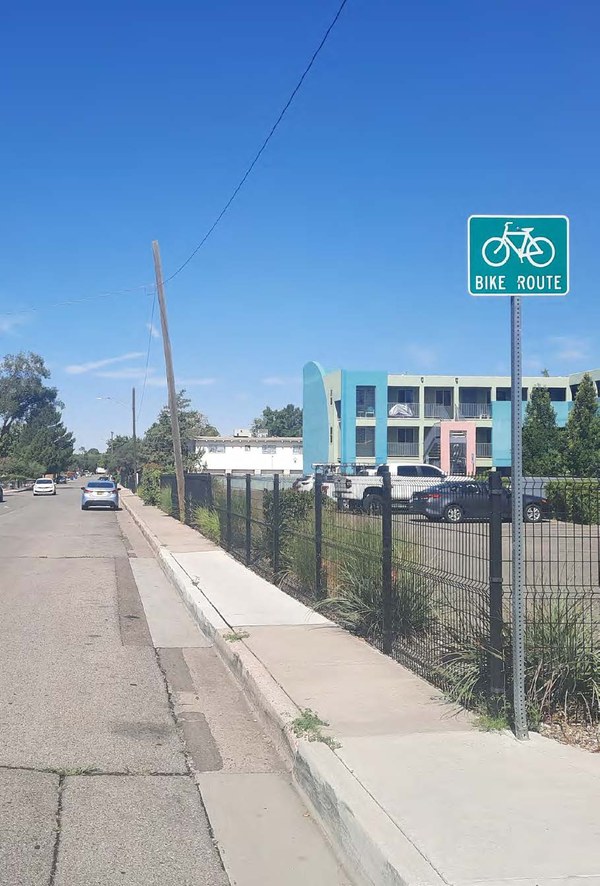
Bike Boulevards
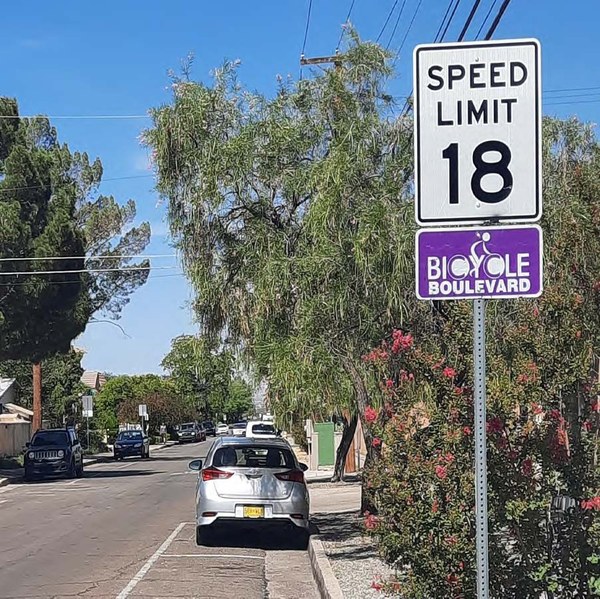
Bike Lanes
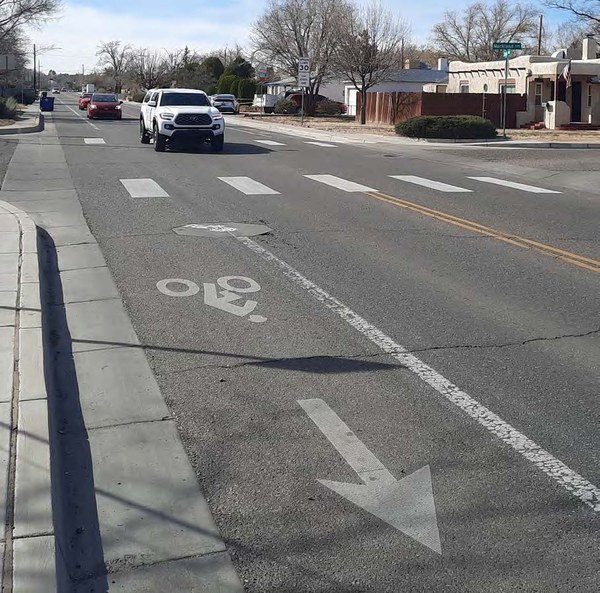
Buffered Bike Lanes
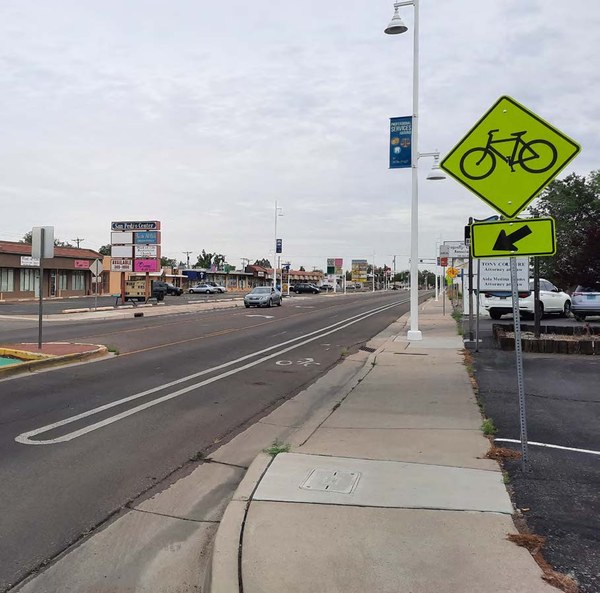
Separated (Protected) Bike Lanes
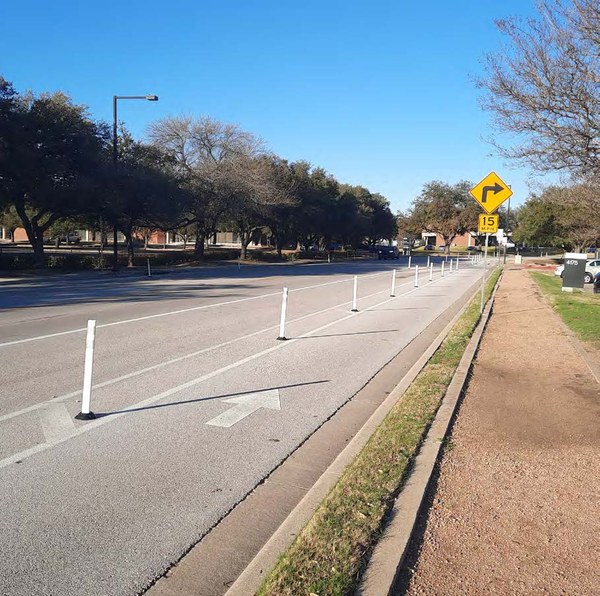
Paved Multi-Use Trails
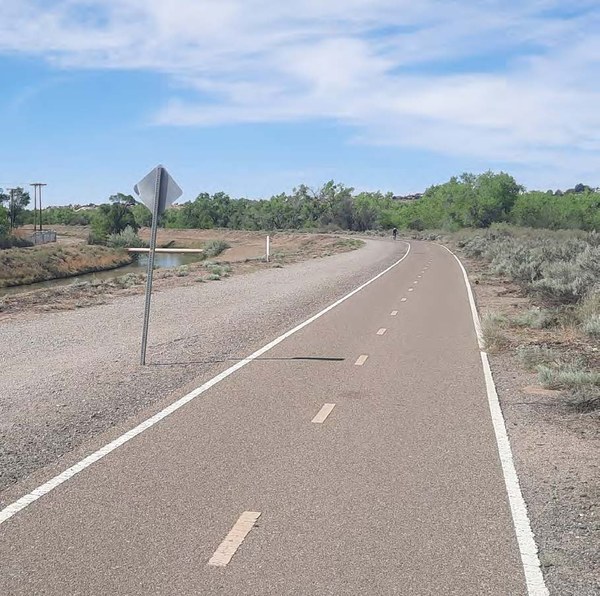
Sidepaths
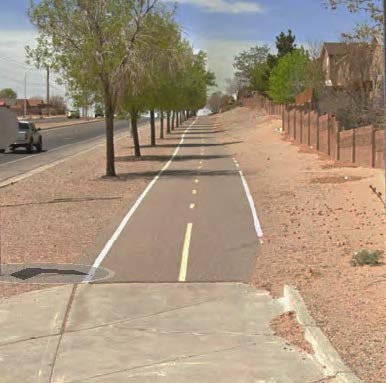
Bike Loop Detectors
Loop detectors are coils of wire set into the pavement which, after they are electromagnetically triggered, alert traffic lights to change in the direction of travel, similar to a vehicle. They also extend the allotted crossing time.
Green “Paint”
Green thermoplastic sometimes called green “paint” provides increased visibility to people cycling and people driving while also providing a slip-resistant surface to allow cyclists better traction in inclement weather. Green thermoplastic can help delineate potential conflict zones between drivers and people cycling at locations such as driveways or intersections.
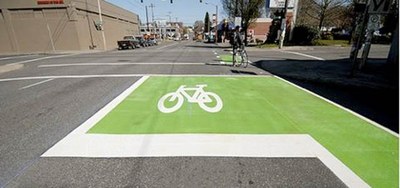
Bike Boxes
A bike box is a designated area at the head of a traffic lane at a signalized intersection that provides bicyclists with a visible way to get ahead of queuing traffic during the red signal phase.
Two-Stage Bike Box
A two-stage bike box has been added to the intersection of Dr. Martin Luther King Jr. Ave and Broadway Blvd. to aid bicyclists in making a left hand turn.
What will you see?
Bicyclists headed westbound on Dr. Martin Luther King Jr. Ave will notice a green box as they cross Broadway blvd.
How Bicyclists Should Use a Two-Stage Bike Box
- When the traffic signal is green, proceed from the westbound Dr. Martin Luther King Jr. Ave. bike lane through the intersection to the green bike box. Face your bike southbound and wait for the signal indication in front of you to turn green.
- Ride southbound across the intersection in the traffic lane, not the crosswalk.
Drivers should stop at the stop bar prior to the green box.
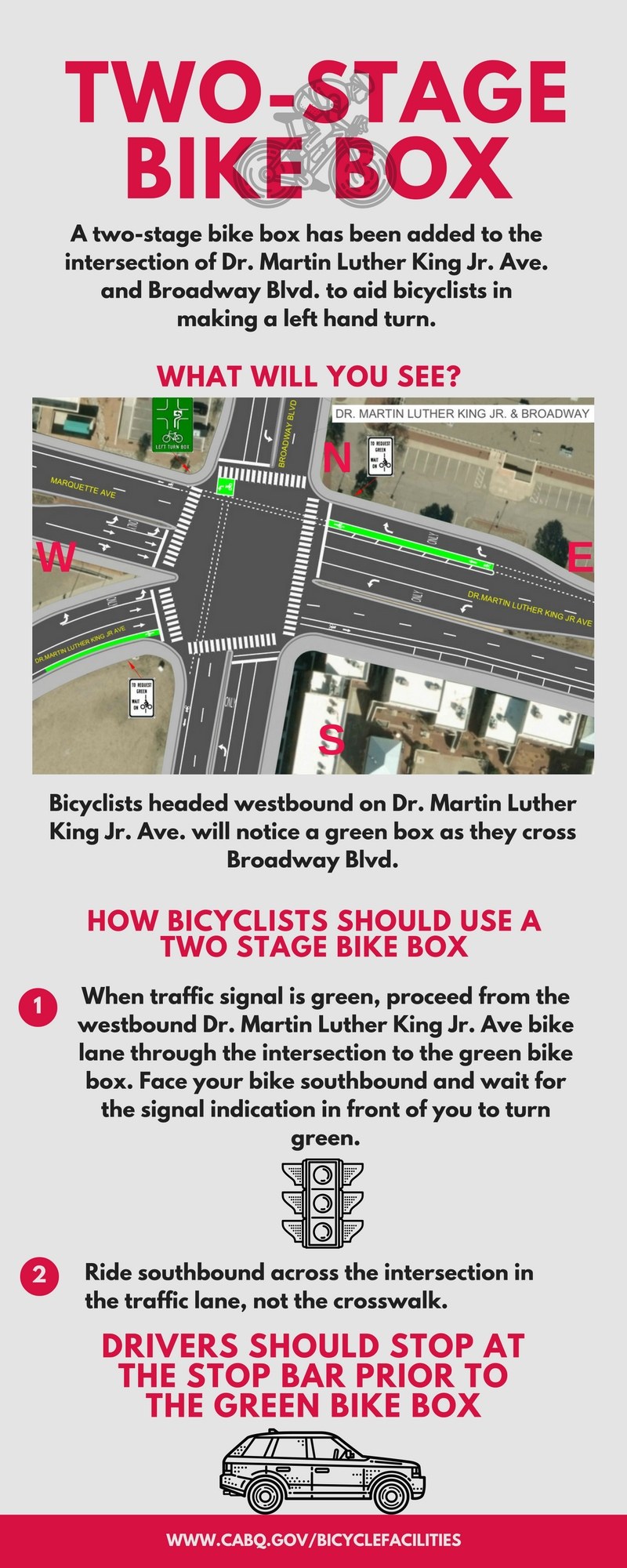
Shared Lane Markings (SLMs) or "Sharrows"
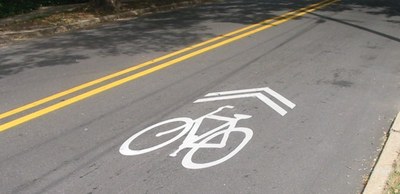
Pedestrian Hybrid Beacon (PHB) or High-Intensity Activated Crosswalk (HAWK) Signal
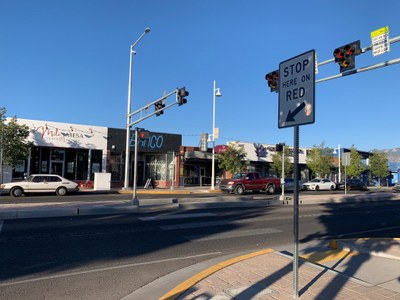
For detailed information on the HAWK signal and a demonstration video, click here. HAWK signals can be found at many locations around Albuquerque including but not limited to throughout the Central Albuquerque Rapid Transit (ART) corridor and Lomas Blvd. and Alvarado Dr. as part of the Fair Heights Bike Boulevard.
Rectangular Rapid Flashing Beacon (RRFB)
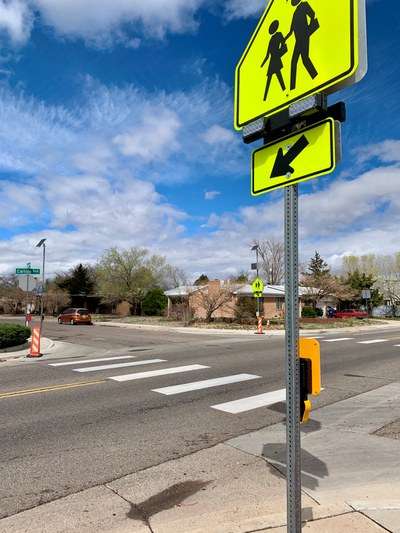
Posted Signs you will see around Albuquerque
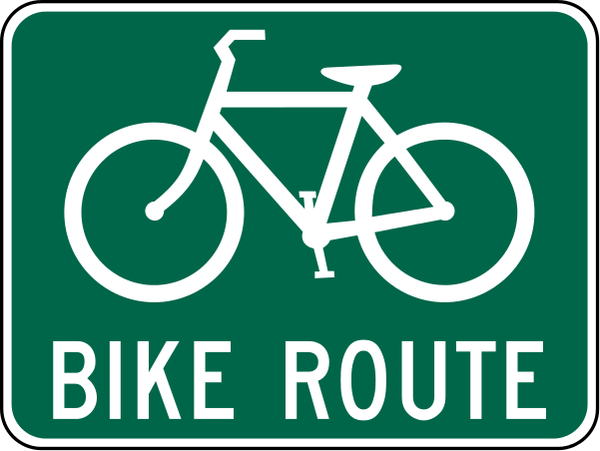
Indicate to bicyclists that they are on a designated bikeway. Make motorists aware of the bicycle route.
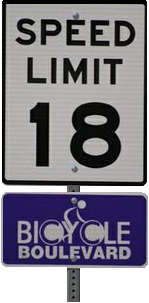
New Mexico State Statutes
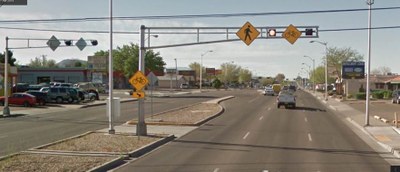
Flashing yellow lights are used to bring caution to drivers. See below NM State Statutes. (Links will not open with Internet Explorer)
Flashing Signals
Whenever an illuminated flashing red or yellow signal is used in a traffic sign or signal it shall require obedience by vehicular traffic as follows:
- flashing red (stop signal). When a red lens is illuminated with rapid intermittent flashes, drivers of vehicles shall stop before entering the nearest crosswalk at an intersection or at a limit line when marked, or, if none, then before entering the intersection, and the right to proceed shall be subject to the rules applicable after making a stop at a stop sign; or
- flashing yellow (caution signal). When a yellow lens is illuminated with rapid intermittent flashes, drivers of vehicles may proceed through the intersection or past such signal only with caution.
Crossing at Other Than Crosswalks
CROSSING AT OTHER THAN CROSSWALKS 66-7-335
- Every pedestrian crossing a roadway at any point other than within a marked crosswalk or within an unmarked crosswalk at an intersection shall yield the right-of-way to all vehicles upon the roadway.
- Any pedestrian crossing a roadway at a point where a pedestrian tunnel or overhead pedestrian crossing has been provided shall yield the right-of-way to all vehicles upon the roadway.
- Between adjacent intersections at which traffic-control signals are in operation pedestrians shall not cross at any place except in a marked crosswalk.
Pedestrians' Right of Way in Crosswalks
PEDESTRIANS' RIGHT OF WAY IN CROSSWALKS 66-7-334
- When traffic-control signals are not in place or not in operation, the driver of a vehicle shall yield the right of way, slowing down or stopping if need be to so yield, to a pedestrian crossing the roadway within a crosswalk when the pedestrian is in the crosswalk.
- No pedestrian shall suddenly leave a curb or other place of safety and walk or run into the path of a vehicle that is so close that it is impossible for the driver to yield.
- Whenever a vehicle is stopped at a marked crosswalk or at an unmarked crosswalk at an intersection to permit a pedestrian to cross the roadway, the driver of another vehicle approaching from the rear shall not overtake and pass the stopped vehicle.
